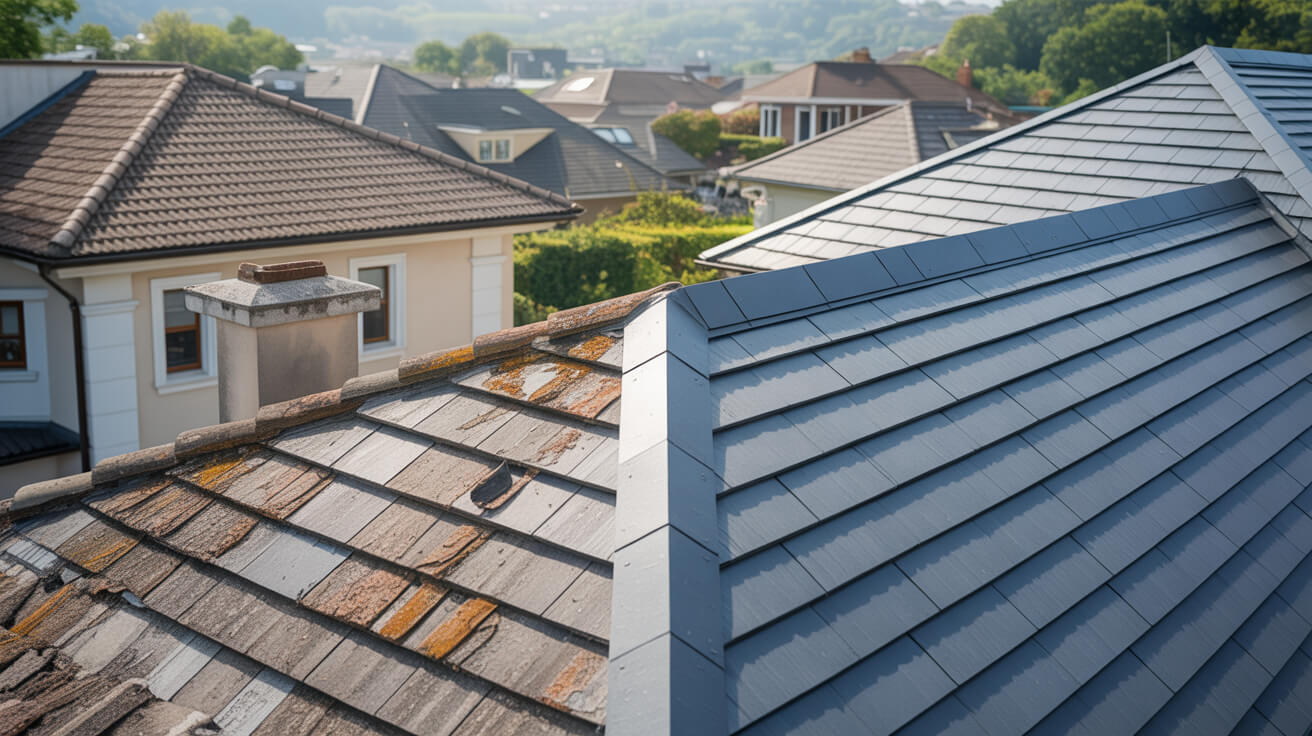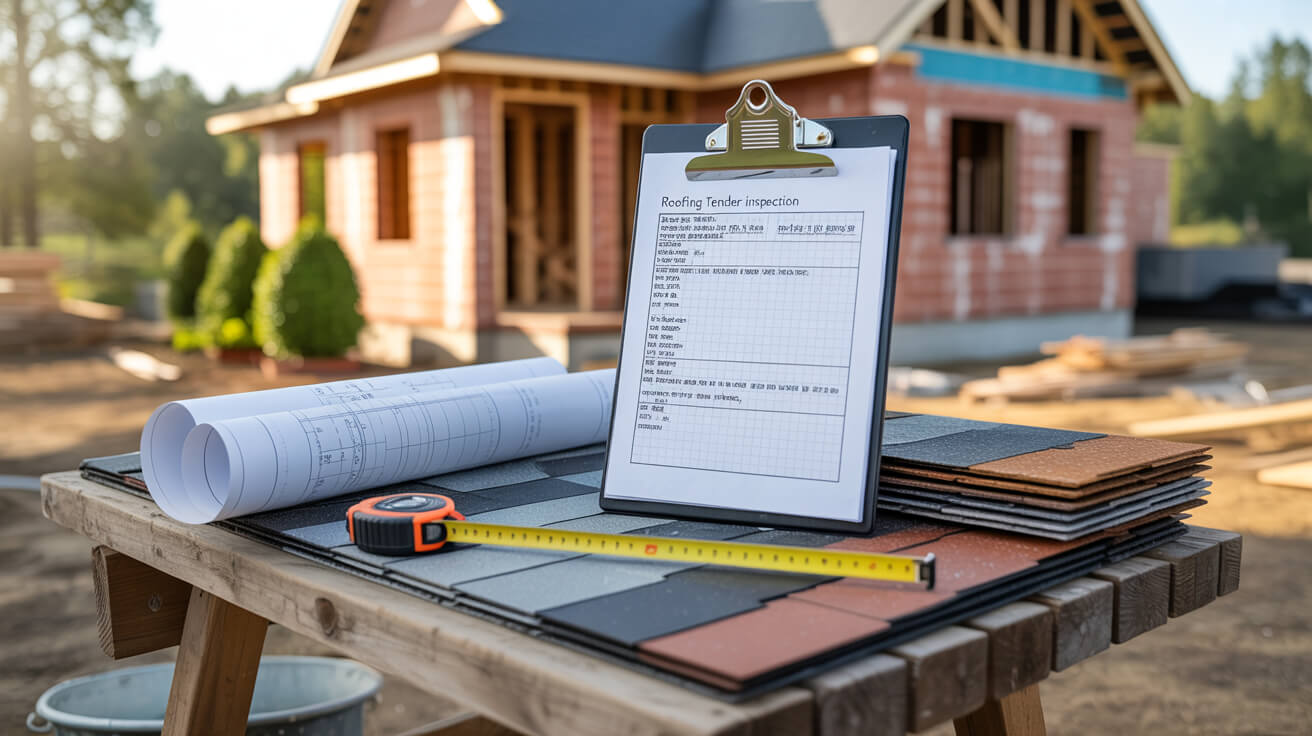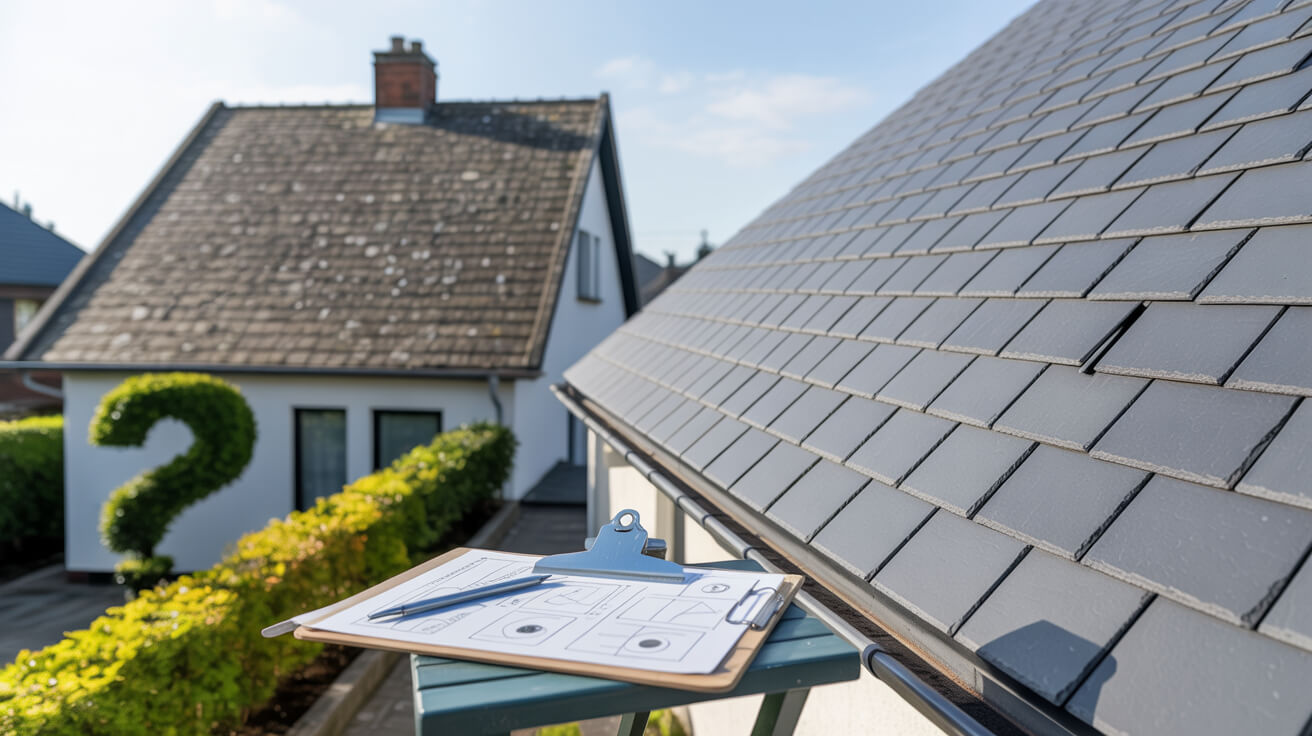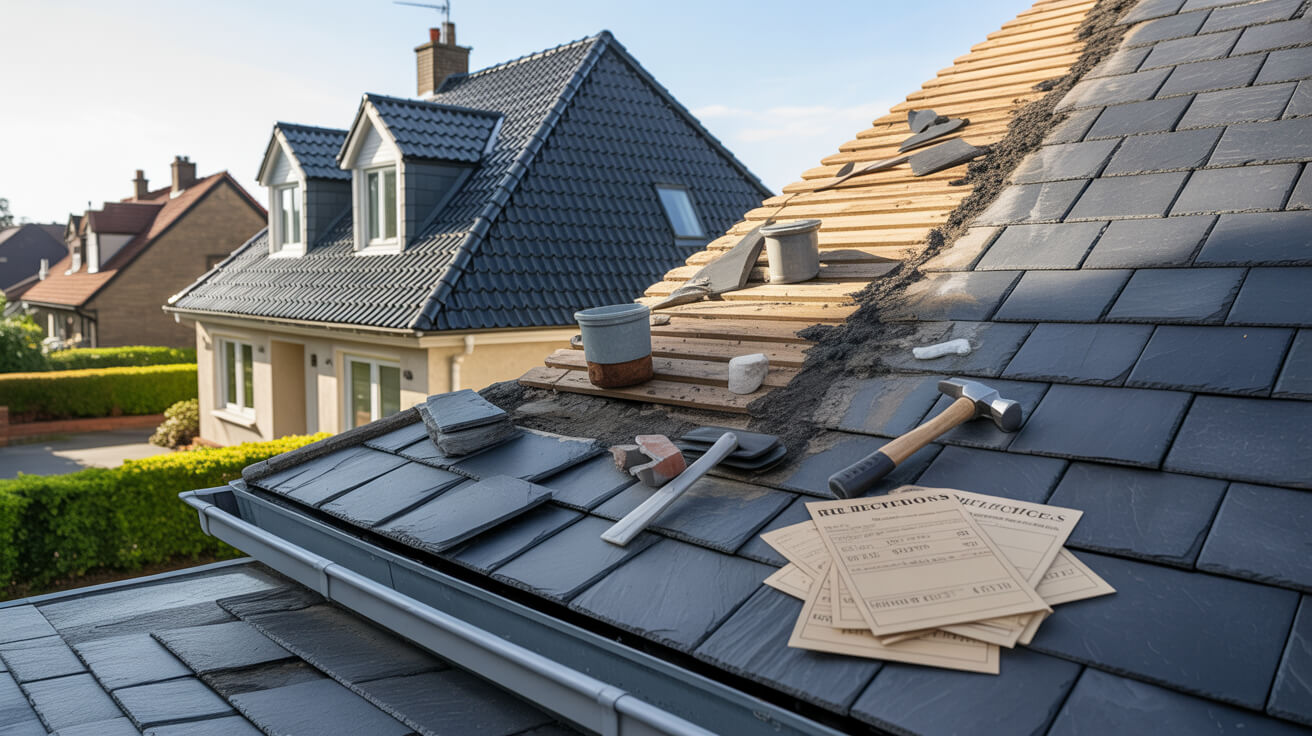 Roof Survey Checklist What Every Property Owner Needs to Check
Roof Survey Checklist What Every Property Owner Needs to Check
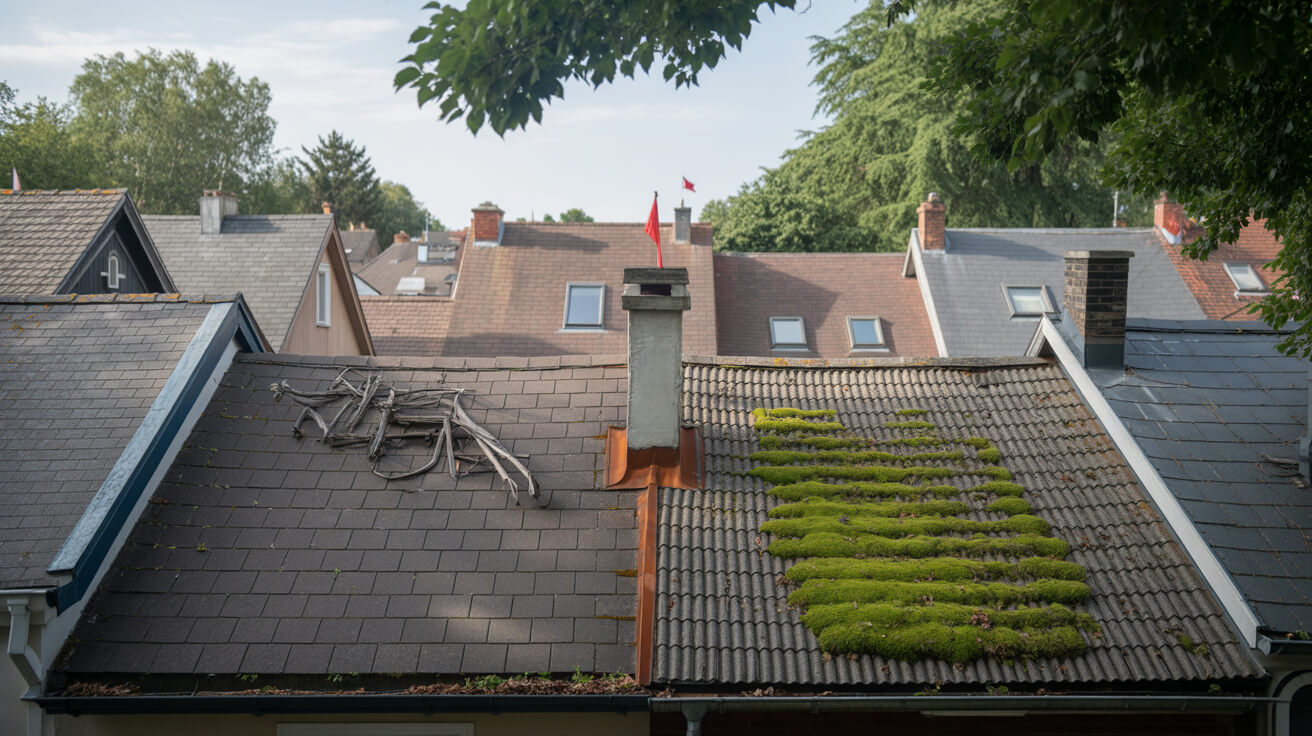
What Is the Fundamental Purpose Behind a Roof Survey Checklist?
When you manage or own property, your roof is the defining line between safe investment and costly disruption. A roof survey checklist is the intelligent mechanism that puts property owners in command—transforming surface-level assumptions about roofing health into measurable clarity. Rather than reacting to performance failures or sudden leaks, using a detailed checklist brings visibility to the hidden realities of your roof’s condition.
Why adopt a systematic approach?
- Uncover evidence invisible from ground level: – Small cracks, lost fixings, blocked gutters, or worn flashings signal deterioration long before leaks appear.
- Prevent minor oversights from growing into high-cost repairs: – Timely identification and intervention mean lower expenditure and fewer headaches.
- Anchor compliance and insurance clarity: – Documented checklists supply the facts insurers, lenders, and building standards require, protecting your asset during claims or valuation.
Equipped with a trade-vetted checklist, you can plan and act rather than simply react. Our team at JG Leadwork and Roofing places these proven tools directly into your workflow—so you’re always ahead of seasonal threats and regulatory shifts. Each inspection is your opportunity to increase control, reduce risk, and build lasting value.
How Do Roof Surveys Safeguard Your Property Investment?
Property is an appreciating asset only when protected from systemic decay. Roof failure isn’t random; it’s usually the logical outcome of unattended shortcuts, superficial visual checks, or no checks at all. A thoughtfully executed roof survey interrupts this pattern, intercepting deterioration before it impacts your return on investment or your organization’s operations.
Every year, real-world data confirms that scheduled preventive surveys can reduce unplanned repair expenditure by up to 40%. When your checklist covers coverage, insulation, structure, and drainage, even the smallest defect becomes a manageable item on a proactive schedule. Structural weaknesses, insulation gaps, and faulty drainage are addressed while repairs remain small-scale, almost always outpacing owners who only act under duress.
Surveys designed around insurance and compliance needs close the communication gap with underwriters and lenders. Regulatory frameworks—such as BS5534, Part L, or Competent Roofer certification—are not mere bureaucracy; they set the pricing power of your portfolio and make the difference between swift claims processing and frustrating delays.
Your checklist, completed with JG Leadwork and Roofing’s method, is more than a routine—it’s the essential evidence that secures your financial protection, borrowing leverage, and compliance standing. We explicitly connect every line of the survey to regulatory expectations, never leaving you exposed to ambiguous interpretations or quick-fix liabilities.
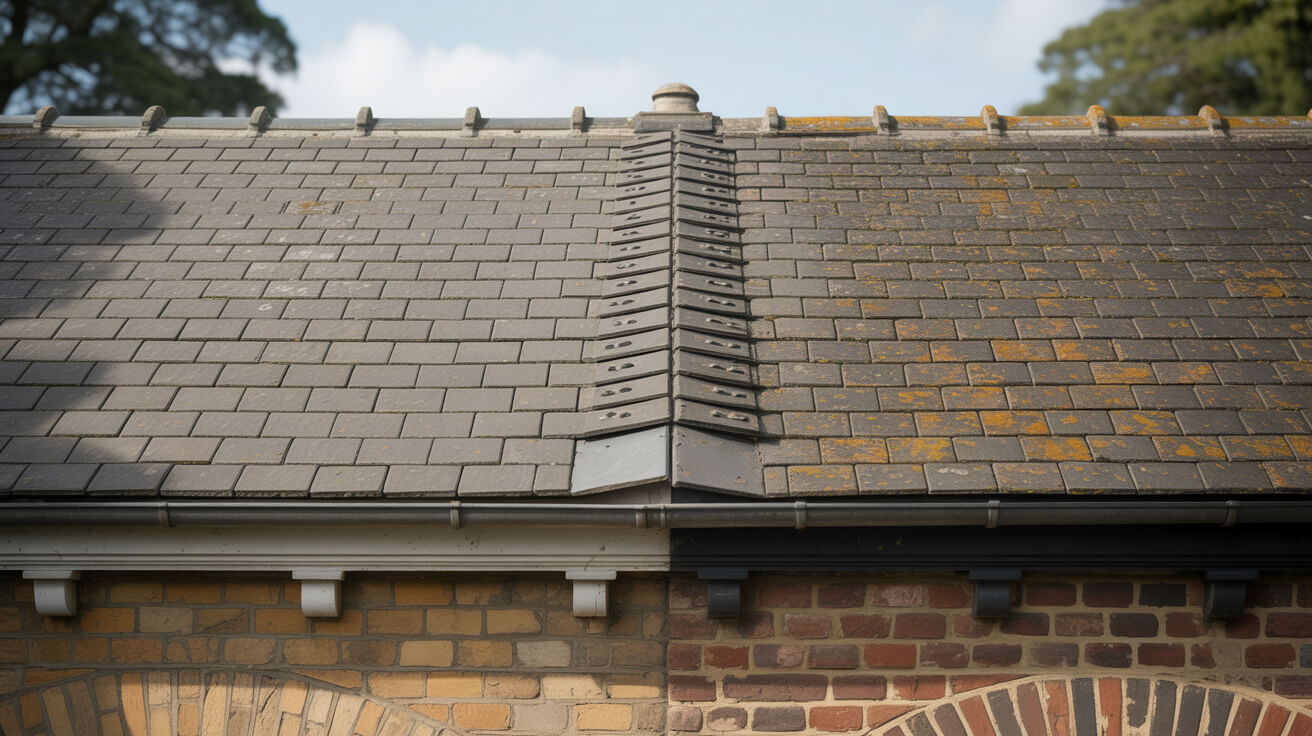
What Are the Key Components to Include in Your Roof Survey?
A robust roof survey transcends the superficial to deconstruct the entire roofing system into practical, checkable elements. Each segment of the roof, from slates to lead valleys, carries its own timeline for wear and decay—which is why standardization is so important.
Core Inspection Elements
- Roof Coverings: Tiles (concrete, clay, slate), single-ply membranes, built-up felt, GRP, liquid-applied systems. Identify misalignment, cracks, moss, loss, or weathering.
- Underlay & Insulation: Roof membranes for water resistance and insulation for energy retention. Survey for moisture ingress, sag, or material breakdown across surfaces such as valleys and junctions.
- Structural Support: Rafters, battens, purlins, trusses, and fixings. Look for movement, warping, woodworm, localized damage, or moisture staining.
- Flashings & Drainage: Lead or synthetic flashings, gutters, valleys, and downpipes. Evaluate installation, seal integrity, and performance against both heavy rain and seasonal temperature cycling.
- Ancillary Components: Chimneys, flues, roof windows, and solar footings. Each introduces its own intrusion risk and should be inspected for seal quality, pointing, and weatherproof transitions.
Inspection Reference Table
| Component | Common Defects | Inspection Method |
|---|---|---|
| Roof Covering | Cracks, moss, slippage | Binoculars, camera, touch check |
| Underlay/Insulation | Sag, damp, delamination | Visual, tap test, moisture meter |
| Structure | Rot, deflection, infestations | Visual, probe, flex test |
| Flashings/Drainage | Lift, corrosion, blockage | Flashlight, ladder, flow trace |
| Ancillary Systems | Loose fit, cracked sealant | Visual, water test, double-check |
A professional system, like the one used by JG Leadwork and Roofing, combines these checks with clear instructions and visuals—removing ambiguity so each risk is addressed promptly and efficiently.
How Can You Execute a Roof Survey Step-By-Step?
The value of a roof survey multiplies when performed with discipline and clarity. Here’s how to execute the process—mirroring the professional rhythm used by our field teams to ensure nothing slips by.
Before Your Survey
- Assemble relevant documents: previous surveys, insurance details, any repairs.
- Prepare your tools: binoculars, gloves, safety equipment, notebook, moisture meter.
- Choose a clear, dry day for best visibility and safe footing.
Exterior Survey Sequence
- Ground scan: Step back and observe for alignment and straightness. Sight along ridges and valleys.
- Covering review: From the ground and at eaves level, check for missing, slipped, damaged, or weathered tiles, slates, or membranes.
- Flashings and valleys: Inspect for corrosion, separation, or biological fouling. Use camera zoom for inaccessible points.
- Gutters and downpipes: Confirm all sections remain properly fixed, unblocked, and aligned to direct water away from exterior walls.
Interior/Loft Survey Steps
- Moisture assessment: Search for brown marks, musty odor, and visible mold on timbers or felt.
- Structure integrity: Probe battens, rafters, and trusses for movement, staining, fungal bloom, or evidence of animal ingress.
- Insulation check: Note any gaps, sag, or compressed sections that may reduce energy performance.
- Ventilation routes: Inspect soffit vents and roof lights are clear, and condensation is not forming near junctions.
Documentation
- Photograph every deviation and label it with date, location, and suspected risk.
- Record findings in your checklist for full traceability—this facilitates insurance, approval, and repair scheduling.
When in doubt, JG Leadwork and Roofing offers on-site guidance or complete survey execution, delivering a fully documented risk map for your roof. Download our step-by-step guide to ensure your checks mirror the rigor of our professional process.
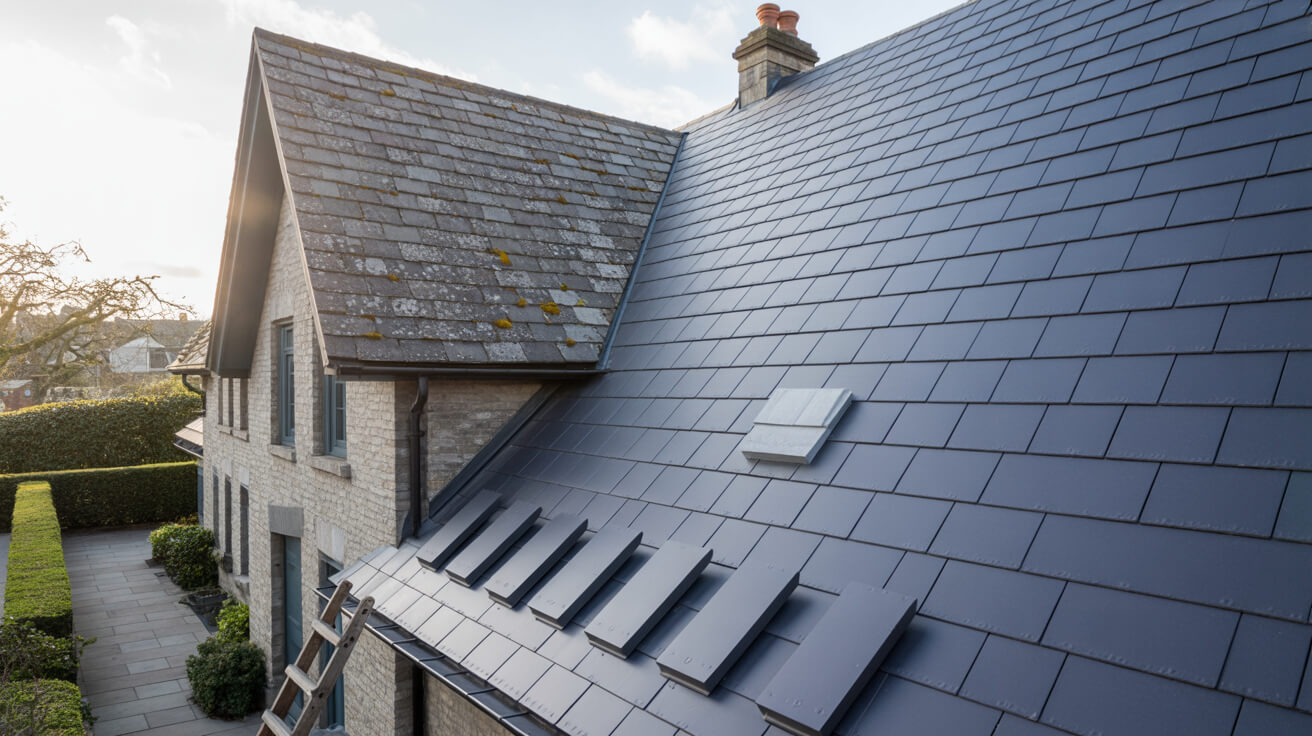
How Can You Spot Critical Red Flags in a Roof Survey?
Red flags are not only the first sign of developing issues; they are the most cost-effective intervention points. Swift recognition and response transform potential emergencies into manageable tasks.
Red Flags to Prioritize:
- Visible brown stains or bubbling: on ceilings or walls (active leaks, condensation).
- Sagging in roof lines or ridges: (structural strain or timber fatigue).
- Loose, cracked, or missing roof tiles, slates, or membranes: .
- Corroded, split, or detached lead flashings: , especially where chimney meets roof.
- Persistent gutter overflow, plant growth, or strange odors: from eaves (water retention).
- Sound changes: (hollow or weak impression) when lightly tapped on suspected areas.
Pitfalls to Avoid:
- Neglecting hidden or hard-to-reach spaces: such as parapets, valleys, and high eaves.
- Ignoring the attic/loft: , where insulation can conceal active or historic leaks.
- Underestimating “minor” issues: , like a slipped tile, which can quickly evolve into full-fledged leaks.
Professional-grade diagnostic tools—thermal cameras, endoscopes—add an essential dimension in detecting threats that time and weather conceal. Unaddressed red flags compromise both property value and occupant safety.
If your survey reveals more than you feel comfortable acting on, reach out to JG Leadwork and Roofing. Our ongoing audits and urgent intervention service provide not just answers, but precise, prioritized action plans.
How Do Frequently Asked Questions Deepen Your Roof Survey Insights?
Common Owner & Buyer Questions
What parts of the roof are actually surveyed?
Every component, from tiles and underlay to joinery and drainage. Our surveys leave no part uninspected, using standardised checklists refined by active site use.
How regularly should I survey my roof for optimal protection?
Annual external and internal checks are recommended, with additional surveys after major weather events, visible changes, or when preparing for sale.
Are DIY checks enough?
DIY is an excellent first line, but never a substitute for trade-backed inspections. JG Leadwork and Roofing brings not only certified tools but decades of pattern recognition you can’t mimic.
Is there a best season for surveying?
Spring and autumn—preceding and following extreme weather—yield the clearest data, making repairs more practical and preventative action more strategic.
Which records should I keep? Document dates, all findings, photographs, contractor invoices, and insurance interactions. Well-kept records increase property value, facilitate claims, and eliminate confusion in sales or disputes.
How do I choose a reliable contractor for complex repair or restoration? Seek local reviews, view portfolios of similar work, and insist on certified qualifications—proof of industry membership and insurance. Our record at JG Leadwork and Roofing provides assurance for even the most demanding projects.
These answers are not simply knowledge—they are empowerment. For a deeper dive, see our FAQ archive or request a tailored session.
How Can You Use Your Roof Survey Checklist to Optimize Maintenance?
A checklist’s value is as much in what happens next as what it first uncovers. Translating survey results to robust, ongoing maintenance protects property value, reassures insurers, and ensures tenants or buyers are always confident in your standards.
Applying Survey Results
- Classify findings: Distinguish between “Monitor,” “Repair,” and “Urgent Action.”
- Prioritize by risk: Structural or water ingress issues go to the top; cosmetic or non-critical matters pick up next.
- Schedule repairs: Use a calendar or maintenance management software—log recurring events, so nothing is missed.
- Document changes: Maintain a running record—“before and after” images, date and action, cost—so long-term trends shape your property improvement strategy.
Maintenance and Budgeting Table
| Action | Frequency | Documentation | Budget Impact |
|---|---|---|---|
| External Check | Biannually | Checklist + Photos | Low, prevents major loss |
| Internal Survey | Annually | Report | Low |
| Repair Log | Ad hoc | Receipts + Notes | Immediate cost offset |
| Red Flag Triage | As needed | Urgency Note + Plan | Highest return |
Repeated over dozens of properties, this system consistently delivers operational savings and upholds the value and compliance standing of each asset.
When your repairs and upgrades flow from survey intelligence, guesswork and last-minute panic disappear from your maintenance playbook. Download our checklist now to start mapping your route from risk to reliability.
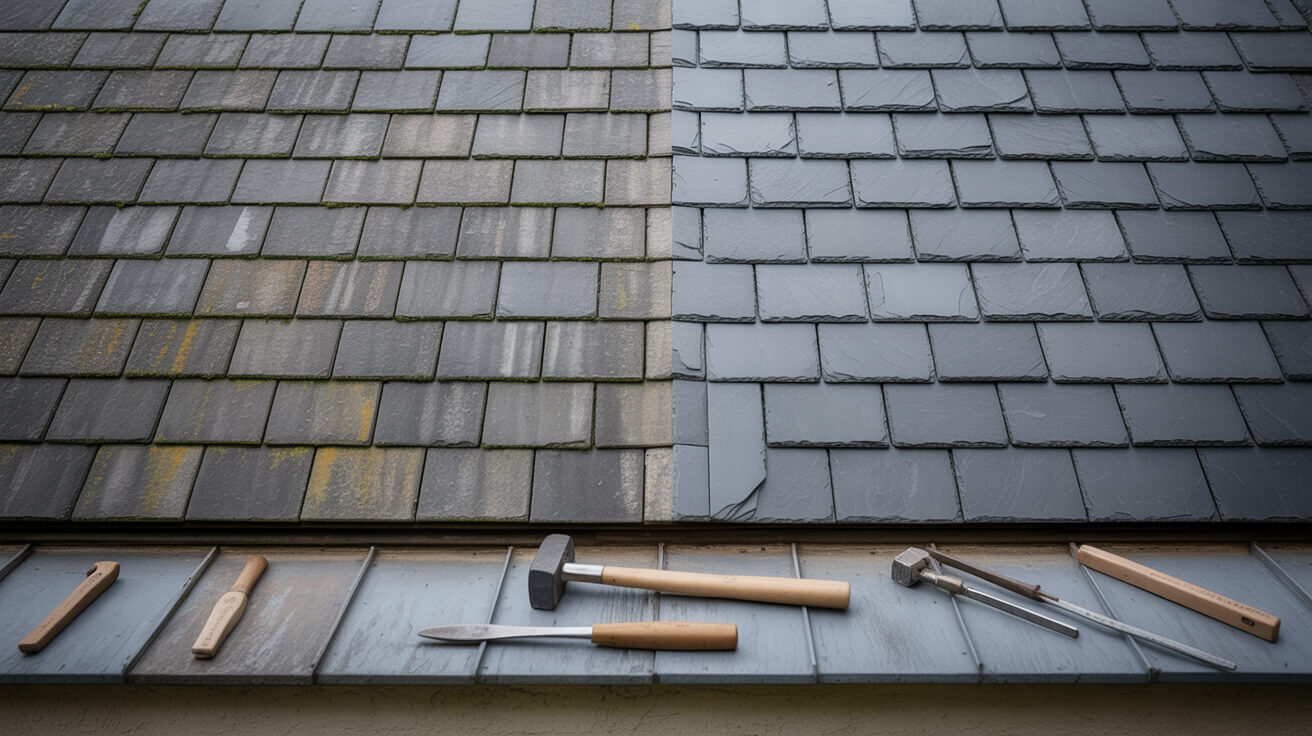
Book Your Free Consultation With JG Leadwork and Roofing Today
Every missed red flag is a future invoice. Roof health never improves by accident—only by knowledge, accountability, and timely action. Booking an expert consultation is the step that positions you on the right side of repair bills, compliance letters, and insurance claims.
What to Expect from Your Consultation
- A full-spectrum risk assessment: , ticking every item in our proven checklist and giving you clear action steps.
- Tailored guidance: —whether you own a new-build or listed property, or manage a site portfolio, the advice is precision-matched to your needs.
- Properly documented reports: —facilitating every insurance, mortgage, or regulatory interaction with no gray areas.
- Trade-only diagnostics: —from thermal imaging to specialist moisture detection, our service finds what casual looks ignore.
Arrange your no-commitment survey and see the clear difference that expert eyes and structured logic bring to your property’s long-term security.
Take the next step—book your free, no-obligation roof survey consultation with JG Leadwork and Roofing now.
Frequently Asked Questions
What Is the Fundamental Purpose Behind a Roof Survey Checklist?
A meticulously designed roof survey checklist is your single most reliable safeguard against the cascading effects of unnoticed roof defects.
Foundation for Proactive Stewardship
Unchecked roofing issues cause stress and financial uncertainty for property owners. Weather, time, and unnoticed wear can easily transform a routine oversight—a cracked tile after a winter storm, a slightly warped flashing at the chimney—into a snowballing chain of repairs. Regular checklists provide a framework that curbs escalating costs and puts you back in control of your investment.
In fact, a systematic approach ensures that you—as the owner or manager—avoid the classic pitfall of superficial inspections.
A well-built checklist drives results:
- Focuses your attention on every layer—covering, structure, insulation, drainage, detailwork.
- Prioritizes action on issues before they spread.
- Positions your property as resilient, ticking every box lenders and insurers require.
From Anxiety to Assurance
Are you worried you might miss a subtle but costly defect? Root your routine in visible, actionable intelligence:
- Use binoculars, moisture meters, and good lighting to see invisible faults.
- Log photos and notes to track changes and substantiate insurance claims.
- Leverage our expert-designed checklists for tailored, evidence-based guidance.
Routine surveys transform buildings from unpredictable risks into reliable assets. The difference between costly chaos and calm control is often as simple as a disciplined checklist. Our experience at JG Leadwork and Roofing is built on this truth—each checklist ties past lessons to proactive action for your property.
How Do Roof Surveys Safeguard Your Property Investment?
Roof surveys are your defensive line against the silent, steady value erosion caused by deferred maintenance and unforeseen weather shocks.
The Compounding Power of Early Detection
Why are systematic surveys superior to react-and-repair cycles?
- Hidden leaks rarely stay small.: Minor water stains become black mold, rot, and energy loss.
- Delays drive up insurance excess.: Most policies require proven inspections for major claims.
- Surprise major works undermine confidence with buyers and tenants.: Transparent records show diligence and drive premium prices.
A trustworthy roofing partner—like JG Leadwork and Roofing—unlocks the ROI of insight.
- Surveys generate an audit trail that creates leverage at every negotiation.
- Regular inspections, properly tracked, shed light on wear patterns, letting you invest early and avoid emergency callouts.
- Safety is not an afterthought. Regular surveys intercept the hidden defects that pose health risks, from falling tiles to unseen mold.
Insurance, Compliance, and Value Protection
Each properly documented survey gives you evidence for insurers, lifts barriers with mortgage providers, and speeds up the sale process. As standards tighten (like BS5534 for slating and Part L for insulation), the days of “it looks fine from below” are over.
A roof survey isn’t just a task—it’s a value lock.
Every box you check, every flaw you fix early, stacks the odds in your favor. Let our systems channel your property budget toward improvement, not recovery.
What Are the Key Components to Include in Your Roof Survey?
A thorough roof survey must leave no hiding place for future faults—each checklist item is a trigger for actionable clarity.
Master Checklist Essentials
1. Roof Coverings:
Examine all visible surfaces—slate, tile, felt, single-ply, or heritage lead. Beyond chips and missing pieces, check for surface granule loss, UV cracking, and improper laps.
2. Underlay & Insulation:
Inspect beneath the skin. Delamination, damp, or sagging insulations sap your roof’s energy performance and breed long-term decay.
3. Structural Timber (Rafters, Battens, Trusses):
Probe for rot, infestation, deflection, and movement. Are fasteners secure? Do you hear hollow knocks where you expect solidity? Structural issues rarely broadcast themselves.
4. Flashings, Gutters & Downpipes:
No checklist is complete without inspecting all perimeter and penetrative flashings, ensuring secure fixings, no corrosion or lifting, and correct water flow through gutters and spouts.
5. Skylights, Chimneys & Ancillary Details:
Every break in the roof surface is a risk—scrutinize for cracked pointing, failing gaskets, or weak flashing junctions.
Checklist Table Example
| Component | What to Check | Frequency |
|---|---|---|
| Tiles/Slates | Cracks, missing, displacement | Every 6–12 mo |
| Flashings | Lifting, corrosion, poor sealant | Ann/Storm |
| Gutter/Downpipe | Blockage, leakage, anchor points, overflows | Biannual |
| Structure | Sag, rot, movement, infestation, insulation sag | Annual |
| Chimneys | Pointing, cracks, lead, water ingress | Annual |
Each inspection is a fresh set of eyes on a living system. Your survey isn’t a formality—it’s ongoing detective work. We ensure every checklist, branded by JG Leadwork and Roofing, is your reference for planned action, not just passive recording.
How Can You Execute a Roof Survey Step-By-Step?
Survey success relies on rigor more than intuition—and a fixed process outperforms memory, every time.
Stepwise Execution Blueprint
- Preparation: Gather documentation, previous reports, and maintenance logs. Equip yourself: binoculars, safe ladder, camera, basic tools, safety gear.
- External Inspection (Ground): From a safe distance, scan all planes for straightness, sag, and surface irregularities. Document any obvious damage.
- Close Reading (On Structure): With approved access, check for minor defects, moss growth, fastener corrosion, blocked valley channels.
- Peripheral Check: Inspect all flashings, upstands, abutments around chimneys, dormers, or skylights for tightness, gaps, and material wear.
- Gutter and Downspout Review: Flow-test with water if possible; check for leaks, blockages, and secure fixings.
- Interior Survey (Loft/Attic): Using a torch, check for signs of staining, damp, soft spots on rafters, insulation quality, and airflow paths.
- Diagnostic Tools: Run a moisture meter along suspect areas, consider thermal imaging for energy loss, and use drone footage for hard-to-reach slopes.
- Documentation: Photograph every defect, log observations, and note urgency or required follow-up.
Structured Table: Survey Flow
| Phase | Activity | Notes |
|---|---|---|
| Preparation | Gather tools/papers | Checklist initiates accountability |
| Exterior | Visual, then close scrutiny | Key for early detection |
| Detailwork | Flashings, perimeters, roof transitions | Weak spots: leak inception points |
| Interior | Check for unseen leaks, ventilation effectiveness | Prevention for hidden decay |
| Diagnostics | Moisture/thermal as needed | Optional, but authoritative |
| Documentation | Photo, log, urgency tracking | Use JG Leadwork and Roofing template |
Every step above is codified and refined by industry learning. Our sequence isn’t just best practice—it’s your shield against excuses from insurers, surveyors, and contractors alike.
How Can You Spot Critical Red Flags in a Roof Survey?
Red flags are the visual (and invisible) code that signals your next move. They’re not warnings—they’re opportunities to take charge before escalation.
Early Detection, Real Consequence
Visible Signs:
- Water marks or stains under roof lines, attic beams, or ceilings
- Sagging along valleys, ridges, or eaves
- Tiles/slates with movement underfoot, chips, surface erosion, or UV bleaching
- Moss or plant growth in seams and gutters—a hidden invitation for rot
- Flashings lifting or pulling from masonry
Hidden Markers:
- Irregular readings on a moisture meter behind insulation or at valleys
- Peeling or split underlay seen through access hatches or vents
- Inconsistent temperature readings (thermal cold spots) under flat roofs
Red Flag Table
| Symptom | Likely Cause | Damage Risk |
|---|---|---|
| Brown spot on ceiling | Leak above, flashings failed | Mold, timber rot |
| Sagging ridge | Structure stress, batten fail | Collapse |
| Split flashing | Expansion, poor install | Water ingress |
| Persistent moss growth | Blocked drainage, standing water | Underlay rot |
The right tools multiply your defensive edge. Our trade-certified surveyors can spot what even finely-tuned checklists miss, and our training ensures you never face “if only I’d seen it earlier.”
The time to act is the moment you sense a red flag—not when the problem appears to force your hand.
How Do Frequently Asked Questions Deepen Your Roof Survey Insights?
Every real-world owner wants their most pressing FAQ addressed—not just for reassurance, but for meaningful action.
Your Top Questions, Demystified
What should you expect in a roof survey?
A professional will check every high-risk point—not just what’s visible, but junctions, joins, and hidden valleys. Their goal: eliminate surprises.
How often should you inspect?
Annually, plus after major storms or before significant transactions (sale, remortgage, or tenant change).
Is DIY enough?
For surface-level reassurance, yes. For structural, insurance, or compliance needs, only a professional’s skills and tools suffice.
When do you call in help?
Anytime red flags emerge, you encounter chronic recurrence, or if compliance or insurance is on the line.
Which tools make a real difference?
Moisture meters and drones for tricky areas, paired with time-stamped records and consistent photo logs.
FAQ Table
| Question | Short Guide |
|---|---|
| Coverage | Every plane, join, detail, not just surfaces |
| Routine | Annually/after bad weather/ROI triggers |
| DIY? | Good for monitoring, limited versus expert |
| Professional Need? | Red flag, recurring issues, compliance required |
| Key Tools | Moisture, thermal, drone, annotated log |
The more you ask, the safer, more valuable, and more future-ready your building becomes. Our practitioners at JG Leadwork and Roofing have fielded every scenario and ensured transparency, so your next project launches from a foundation of hard-won expertise, not guesswork.
How Can You Use Your Roof Survey Checklist to Optimize Maintenance?
Turning inspection into a shield for your asset is simple—when your checklist becomes a living schedule, not a filing cabinet relic.
The Value of Disciplined Upkeep
- Every survey output should channel into a timeline—never let minor repairs wait for “the perfect time.”
- Rank findings by urgency. Address “must-fix” defects within weeks, plan “should-watch” for seasonal checks, and log “cosmetic” for next round budgeting.
- Use maintenance logs to track and schedule repeat issues. Avoid “leak deja vu” by investing in proper repairs once, not endless patchwork.
Maintenance Optimization Table
| Issue Level | Action Required | Interval |
|---|---|---|
| Structural | Fix ASAP, monitor biannual | Ongoing |
| Leaks | Immediate, confirm resolve | 1-4 weeks |
| Insulation gaps | Address in next refurb | Next quarter |
| Cosmetic | Batch for routine season | Biannual/annual |
A survey-driven schedule outperforms ad-hoc repairs by reducing downtime, insurance friction, and total lifecycle spend.
The single best practice?
“Never let a minor issue cycle twice.”
Let our checklists—field-tested and battle-hardened—be your roadmap to property resilience and investor confidence.
